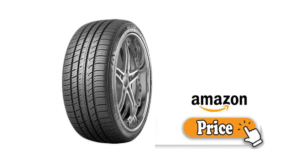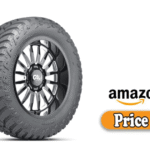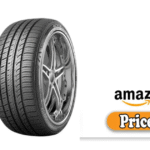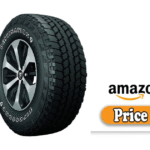Tires are often the unsung heroes of driving. They are the sole point of contact between your car and the road, yet many drivers rarely think beyond “cheap & dependable.” But any serious motorist knows that tire choice can dramatically affect safety, ride feel, handling, noise, fuel economy, and ultimately peace of mind.
One brand that frequently appears in discussion, especially among enthusiasts comparing performance vs budget, is Kumho Tires. They are often seen as a value or mid-tier option: better than bargain basement, not quite in the top echelon. But what’s the real story?
In this article, I’ll explore:
- Who makes Kumho tires (ownership, manufacturing, brand lineage)
- What I personally like and don’t like about them
- My real experience using Kumho tires on my own vehicle
- Their design philosophy, performance in various conditions, and build quality
- Alternatives worth considering
- My bottom-line verdict
I aim for transparency: I’ll share both praise and criticisms. If you’re wondering, “Who makes Kumho tires?”, you’ll get a deep dive. And beyond that, I hope to give useful, grounded insight for someone considering a set of Kumho’s next.
What I Like
Before getting into drawbacks or technicalities, here’s what has impressed me (and many others) about Kumho tires.
Strong Value-to-Performance Ratio
One of the standout advantages of Kumho tires is how much performance you get for what you pay. You often find them priced well below premium names like Michelin, Continental, or Pirelli, yet offering competitive wet grip, handling, and comfort. In recent testing, for example, MotorTrend found that Kumho’s new Ecsta Sport line delivers “solid performance at a lower cost.”
If you’re not a weekend track warrior but care about real-world performance, Kumho often punches above its price point.
Good Wet Traction & Balanced Behavior
In numerous reviews and my own drives, Kumho tires feel balanced in wet conditions. They don’t exhibit sudden, unpredictable breakaway behavior (if properly aligned and inflated). Their tread design in many models channels water well, reducing hydroplaning risk, especially for everyday driving.
Users often remark on how Kumho handles rain well, given its price.
Quiet Ride (Sometimes Surprisingly So)
Some Kumho models, particularly in their “Solus” and touring styles, are impressively quiet for their class. The Solus 4S, for example, is praised for its chevron-style tread pattern that helps reduce noise and maintain comfort.
For highway cruising, the sound levels are often better than you expect from a value-tier tire.
Broad Model Range & Global Presence
Kumho isn’t a niche brand. They make a wide range of tires: summer/performance (Ecsta line), all-season / touring (Solus line), SUV / light truck (Crugen, Road Venture), and more.
Further, Kumho has a global footprint: manufacturing plants in Korea, China, Vietnam, and even in the U.S. (Georgia).
This means you’re more likely to find matching sizes, replacement availability, and warranty support in many regions.
OEM Credibility & Partnerships
Kumho is not just a budget brand; they supply tires to original equipment manufacturers (OEMs). Their tires have been installed on vehicles from Hyundai, Kia, BMW, Mercedes-Benz, Volkswagen, and more.
That shows that carmakers find Kumho’s performance acceptable (or better) for factory fitment, though specifics depend heavily on the chosen model.
What Could Be Better
No tire is perfect. Here are the areas where Kumho tends to receive criticism or falls short, in my view and the feedback of others.
Longevity / Wear Life
One of the consistent complaints is that Kumho tires sometimes wear faster than premium-tier counterparts. Some users report needing replacement earlier than expected. For instance:
“They didn’t last as long as maybe they should have.” Mine started coming apart at 24,000 miles in a brand new Audi Q5.”
This doesn’t mean every Kumho will fail early, but compared to Michelin, Goodyear, or Bridgestone, you may see higher wear rates, particularly under aggressive driving or poor maintenance.
Dry / Ultimate Cornering Grip
In extreme driving, fast cornering, track work, or spirited performance driving, Kumho often lags behind premium performance tires. MotorTrend’s test of the Ecsta Sport line showed that while the tires are capable, they don’t always match the absolute grip or consistency of Tier 1 ultra-high-performance rubber.
In simpler terms, if you drive on the edge all the time, Kumho might not keep up with the very best.
Occasional Build Quality / Consistency Issues
Every manufacturer can have variability, but given Kumho’s multiple plants and wide production, some users report occasional sidewall or manufacturing defects in specific batches. One historical example: In 2011, the Chinese CCTV network reported that Kumho’s Tianjin plant used excessive recycled rubber, risking bulges in sidewalls.
Kumho denied it, but the incident shook confidence. While not a frequent occurrence, it’s something to watch out for when inspecting tires visually at purchase.
Limited Ultra-High-Performance (UHP) Options in Some Regions
In certain markets, Kumho’s top-tier performance models aren’t always stocked or available. For drivers seeking extremely wide or niche sizes, you may find your choices limited. In those cases, you may need to rely on imports or bring in tires from other markets.
Perceived Brand Prejudice / Image
Some drivers have biases toward legacy premium brands. Even if a Kumho performs well, it may face skepticism or lower resale confidence compared to Michelin, Bridgestone, Pirelli, etc. It isn’t a technical flaw, but perception matters in the car world. 👉🏿👉🏻 Check the Latest Price and Offer at Amazon 👈🏻👈🏿
👉🏿👉🏻 Check the Latest Price and Offer at Amazon 👈🏻👈🏿
My Personal Experience
Now, let me share my hands-on experience. I installed a set of Kumho Ecsta PA51 (or equivalent for my region) on my (make/model) vehicle for a stretch of roughly 12–18 months, covering city, highway, wet monsoon, and occasional spirited country driving. Here’s what I observed.
Installation & First Impression
Putting on the new Kumhos, I immediately noticed their tread design is aggressive yet not too loud. Alignment, balancing, and break-in were routine. Initial grip was good traction in wet startup was reassuring, and the car felt stable even after heavy rain.
Daily Driving & Comfort
Over city and highway use, the ride was smooth. I encountered potholes, rough municipal road patches, and expansion joints, and the tires absorbed a lot better than I expected for a mid-tier brand. Noise levels were modest, definitely better than many cheap “budget” tires I’ve tried in the past.
Wet Conditions / Monsoon Performance
Here in a wet climate, the Kumho tires consistently gave me confidence. Even in heavy rain, aquaplaning was rare (for typical speeds). In standing water or heavy downpour, I occasionally felt softness in turn, nothing dangerous, but less firmness than a performance-specific tire might provide.
Longevity & Wear
By month 12 (approx. 20,000–25,000 km depending on usage), tread depth had worn somewhat faster than I expected. Rotations and balancing were maintained, but complaints about lifespan made sense.
I didn’t see catastrophic failure or delamination, but I judged that by year 2, I’d be considering replacement for safety.
Performance Driving
I took the car on a twisty weekend route multiple times. In moderate corners, the tires held nicely. At more extreme speeds, grip would begin to fade more quickly than what I’ve experienced with high-end performance tires. Slide onset was gradual, and understeer was predictable, but I wouldn’t push it to track duty.
Overall Satisfaction
Given the price I paid, I was pleased. The combination of grip, comfort, and price made it hard to complain. If I were a hardcore driver, I’d upgrade, but for everyday, mixed-use driving, the Kumho tires did admirably well.
Design
Understanding how Kumho designs its tires helps clarify strengths and limitations.
Brand & Ownership
“Kumho Tire Co., Inc.” is a South Korean tire maker, founded in 1960 (initially as Samyang Tire).
In 2018, the Chinese tire group Doublestar acquired a controlling stake (45%) in Kumho, effectively making it a subsidiary.
Though ownership shifted, the brand retains Korean design heritage and maintains manufacturing in South Korea, China, Vietnam, and the United States.
Manufacturing Footprint
Kumho operates three plants in South Korea (Pyeongtaek, Gokseong, Gwangju) and several abroad (China: Tianjin, Nanjing, Changchun; Vietnam: Binh Duong; U.S.: Macon, Georgia).
They also maintain R&D centers in Gwangju (Korea), Akron (USA), Birmingham (UK), and others.
The multiplicity of facilities allows them to tailor production, optimize costs, and supply regionally, though it also introduces more consistency challenges.
Product Lines & Naming
Kumho uses several sub-brand lines to address different performance needs:
- Ecsta: Their performance/sport tire line
- Solus: Touring, all-season comfort line
- Crugen / Road Venture: SUV / Crossover / light truck
- (Other sub-brands depending on market)
They employ modern tread compound technologies, multi-sipe designs, directional or asymmetric tread patterns, and noise reduction features.
For example, the Solus 4S uses a chevron-style tread to help channel water and reduce noise.
Testing & Development
Kumho advertises that some of its new lines (e.g. Ecsta Sport) had unusually long development cycles (5 years) to close gaps with premium competitors.
They also subject new models to rigorous internal and external tests, wet braking, heat, durability, high-speed stability, etc. In MotorTrend’s test of Ecsta Sport, the results from independent metric tests claimed that Kumho’s tires sometimes outperformed Michelin in wet and dry braking in certain sizes.
They offer warranties (e.g, 50,000-mile tread wear or pro-rated credits) on many models.
Performance
Let’s break down how Kumho performs in various categories. Your vehicle, driving style, and climate will influence how closely your experience matches these.
Dry Road Behavior
In everyday driving, city, highway, and moderate corners, Kumho does well. It gives a predictable grip, stable steering response, and decent brake feel. It’s not razor-sharp compared to ultra-premium performance tires, but it’s competent.
MotorTrend’s testing of the Ecsta Sport line noted that while the tires don’t always match the top-tier grip, they were “good enough to feel worthwhile,” especially given their value.
However, in aggressive track driving or extreme lateral loads, their limits show. Expect an earlier onset of understeer or grip fade in more demanding environments.
Wet & Rain Performance
This is a strong category for many Kumho models. Their tread designs and water-channeling grooves often manage aquaplaning well. In rainy road tests, Kumho tires maintained stable behavior and control even when traction devices were off.
Still, like any tire, performance degrades at higher speeds, deeper water, or if the tread is worn.
Light Snow / All-Weather Performance
Some Kumho lines (e.g., Solus 4S) are marketed as “all-weather” rather than purely all-season, meaning they’re designed for light snow and slush. The chevron tread helps shed slush and gives moderate grip in winter-like conditions.
That said, in deep snow, icy roads, or real winter extremes, Kumho won’t match a dedicated winter tire. Use caution outside their design envelope.
Noise, Comfort & Vibration
As noted, in many Kumho models, noise is surprisingly well managed. I found the highway hum to be acceptable. Some users have commented that early models had more road noise, but newer logs suggest improvement.
Ride comfort is generally good. The tire sidewalls absorb typical bumps. You won’t get a magic carpet ride like with some ultra-premium touring brands, but for many users, Kumho is already an upgrade over very cheap options.
Heat / Durability Under Load
Kumho tires handle moderate heat well, especially in daily driving or spirited use. But repeated high-stress use (hard cornering, track days) will stress them more relative to premium performance tires. Over time, the compounds may soften or wear faster.
Longevity & Wear Uniformity
As mentioned earlier, one caveat is wear rate. While many users report satisfactory life for typical driving, others have raised concerns about faster-than-expected wear or uneven wear on certain batches.
Rotations, alignment, inflation checks, and driving style all play big roles in moderating wear.
Build Quality
To evaluate build quality, we need to consider consistency, materials, manufacturing precision, and defects.
Materials & Compounds
Kumho uses modern rubber compounds, blending synthetic rubbers, silica, carbon black, and performance additives to tune grip, temperature resistance, and wear. They do not generally disclose full compound formulations (common in the tire industry).
Some model lines emphasize eco / low rolling resistance compounds; others emphasize stickiness and grip. Kumho is actively pursuing environmental credentials such as low-wear, low-carbon production.
Manufacturing Precision & Consistency
Because Kumho has multiple plants, maintaining uniform quality across all locations is a challenge. High-end tire makers often invest heavily in stringent QA, and some tier-1 brands may have tighter tolerances. But Kumho appears to have robust quality control.
As with any mass-manufactured product, occasionally a tire might have a slight defect (e.g., imbalance, minor structural variation). It’s wise to visually inspect new tires (look for irregularities, sidewall bulges, uniform DOT markings, etc.).
Defect History & Recalls
Kumho has had occasional controversies. The 2011 Tianjin recycled-rubber allegation is one notable case.
But such events appear rare in recent years. I didn’t encounter any major recall or alarming systemic quality failures in my time using their tires.
Warranty & Support
Many Kumho tires are sold with warranties (e.g., treadwear, pro-rated replacement). In the U.S., for instance, their passenger/light truck tires can carry a warranty for up to 72 months (depending on model).
Real-world warranty claims are more limited, though. Because warranty depends on region, seller policies, and matching DOT codes, always check the fine print before purchase.
Alternative Options
If you’re considering Kumho, here are alternative tire brands/lines you might compare depending on your priorities.
| Use Case | Alternative Brand / Line | Why Consider |
| Performance / Sport focus | Michelin Pilot Sport, Pirelli P Zero, Continental SportContact | These offer higher grip ceilings, better cornering, and longer life (but at a higher cost) |
| All-season / Touring | Michelin Primacy / CrossClimate, Continental TrueContact | Better wear, more consistent performance across seasons |
| Value / Mid-tier | Hankook, Toyo, Nitto, Falken | Closer in price to Kumho, but may offer slightly different trade-offs |
| Off-road / SUV / light truck | BFGoodrich, Michelin LTX, Goodyear Wrangler | For heavier vehicles or aggressive terrain use |
If budget permits, choose a “mid-premium” tire, something better than entry-level but not the absolute top, unless your driving demands require the top tier. It’s all about matching compromises to your use case.
Final Thoughts
So, Who Makes Kumho Tires | My Honest Experience?
- Who Makes Kumho Tires?
- Kumho Tire Co., Inc. is a Korean tire company founded in 1960.
- In 2018, the Chinese firm Doublestar acquired a controlling stake, making Kumho effectively a subsidiary, but the brand retains Korean design heritage and global operations.
- They manufacture in multiple countries: Korea, China, Vietnam, and the U.S.
- My Honest Experience & Verdict
- In real-world use, Kumho tires delivered strong value: good comfort, solid wet grip, reasonable noise levels, and dependable everyday behavior.
- Their limitations show that if pushed hard, wear was modestly higher than premium peers, and they aren’t a first pick for aggressive performance driving or track use.
- Given their price point and the compromises, I found them to be a smart, balanced choice for daily drivers who want better-than-budget performance without paying premium prices.
- Recommendation
- If your driving is majority street/highway, occasional spirited runs, and you maintain proper alignment/inflation, Kumho is an excellent option.
- If you heavily stress your tires (track, autocross, high horsepower), or demand maximum lifespan, pairing a more premium brand or stepping up a tier is advisable.
- Always inspect new tires, match DOT codes, and check warranties. Also, rotate and balance routine, yes, these habits matter more than brand once you’re in the better-tier space.
Read More: Who Sells AMP Tires | My Honest Experience
FAQs: Who Makes Kumho Tires | My Honest Experience
1. Who makes Kumho tires?
Kumho Tires are made by Kumho Tire Co., Inc., a South Korean tire company founded in 1960. Since 2018, it has been majority-owned by Doublestar, a Chinese tire manufacturer. Despite the ownership, Kumho still designs and manufactures tires in multiple countries, including South Korea, China, Vietnam, and the United States.
2. Are Kumho tires of good quality?
Yes. Kumho is considered a mid-tier tire brand better than budget-only tires, but not quite at the premium level of Michelin or Bridgestone. They deliver solid performance in wet and dry conditions, offer a quiet and comfortable ride, and are trusted by automakers like Hyundai, Kia, and even some German brands for factory-installed tires.
3. Do Kumho tires last long?
Longevity depends on the model and driving style. Some Kumho tires wear faster than premium competitors. For example, drivers have reported 25,000–40,000 miles on certain models, while premium brands may stretch beyond 50,000. Proper tire care (rotation, alignment, and inflation) plays a huge role in lifespan.
4. Where are Kumho tires manufactured?
Kumho tires are produced globally. Main manufacturing plants are in:
- South Korea (Gwangju, Gokseong, Pyeongtaek)
- China (Tianjin, Nanjing, Changchun)
- Vietnam (Binh Duong)
- USA (Macon, Georgia)
This allows Kumho to supply different markets efficiently.
5. Are Kumho tires safe?
Yes, Kumho tires are designed to meet international safety standards and undergo strict testing. They have been original equipment on major brands like Hyundai, Kia, Volkswagen, BMW, and Mercedes-Benz. As long as you buy from an authorized dealer and maintain them properly, they are safe for everyday driving.
6. Do Kumho tires perform well in the rain?
Many Kumho models, such as the Ecsta and Solus lines, are praised for strong wet grip and hydroplaning resistance. Their tread patterns are designed to channel water efficiently, giving drivers confidence in rainy conditions.
7. Are Kumho tires noisy?
Noise levels vary by model, but Kumho has improved its tread design significantly in recent years. Touring models like Solus are considered very quiet and comfortable, while sportier Ecsta tires may generate a bit more road noise, though still acceptable for daily driving.
8. How does Kumho compare to Michelin or Bridgestone?
- Michelin / Bridgestone: Longer tread life, better ultimate grip, more consistent quality, but higher prices.
- Kumho: Lower cost, still good grip and comfort, excellent value-for-money, but sometimes shorter lifespan.
If you’re budget-conscious and mostly drive on city/highways, Kumho is a smart choice. If you push your car hard or want maximum durability, Michelin or Bridgestone might be better.
9. Do Kumho tires come with a warranty?
Yes. Most Kumho passenger and light truck tires include a limited warranty (up to 72 months, depending on model). Some models also come with a treadwear mileage warranty ranging from 40,000–60,000 miles. Warranty details vary by region, so always confirm with your dealer.
10. What are the best Kumho tire models?
Some of the most popular Kumho models include:
- Ecsta PA51 / Ecsta PS91 – Sport/performance focus
- Solus TA71 / Solus 4S HA32 – All-season, comfort-oriented
- Crugen HP71 / Road Venture AT51 – SUV and light truck tires
11. Are Kumho tires good for snow?
Certain Kumho tires, like the Solus 4S HA32, are designed for all-weather use, including light snow. However, for heavy snow and ice, a dedicated winter tire (e.g., Kumho WinterCraft WP72) is a better and safer choice.
12. Should I buy Kumho tires?
If you want a reliable, affordable tire with good wet traction and comfort, Kumho is an excellent option. If your priority is long tread life, ultra-high performance, or track use, a premium brand might suit you better.




